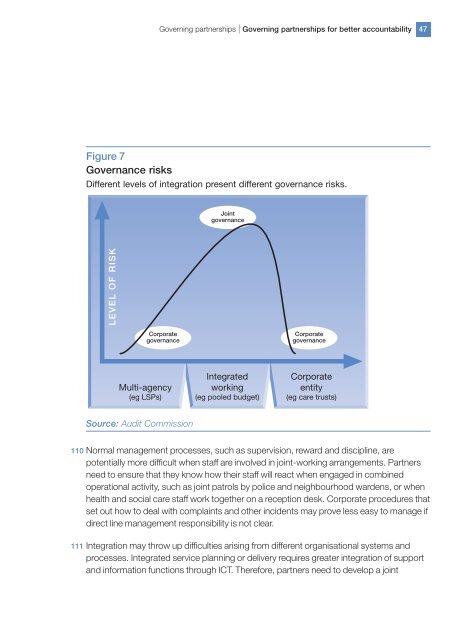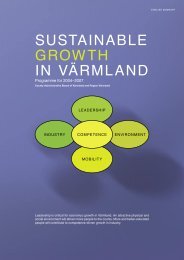Bridging the accountability gap - Audit Commission
Bridging the accountability gap - Audit Commission
Bridging the accountability gap - Audit Commission
You also want an ePaper? Increase the reach of your titles
YUMPU automatically turns print PDFs into web optimized ePapers that Google loves.
Governing partnerships | Governing partnerships for better <strong>accountability</strong> 47<br />
Figure 7<br />
Governance risks<br />
Different levels of integration present different governance risks.<br />
Joint<br />
governance<br />
LEVEL OF RISK<br />
Corporate<br />
governance<br />
Corporate<br />
governance<br />
Multi-agency<br />
(eg LSPs)<br />
Integrated<br />
working<br />
(eg pooled budget)<br />
Corporate<br />
entity<br />
(eg care trusts)<br />
Source: <strong>Audit</strong> <strong>Commission</strong><br />
110 Normal management processes, such as supervision, reward and discipline, are<br />
potentially more difficult when staff are involved in joint-working arrangements. Partners<br />
need to ensure that <strong>the</strong>y know how <strong>the</strong>ir staff will react when engaged in combined<br />
operational activity, such as joint patrols by police and neighbourhood wardens, or when<br />
health and social care staff work toge<strong>the</strong>r on a reception desk. Corporate procedures that<br />
set out how to deal with complaints and o<strong>the</strong>r incidents may prove less easy to manage if<br />
direct line management responsibility is not clear.<br />
111 Integration may throw up difficulties arising from different organisational systems and<br />
processes. Integrated service planning or delivery requires greater integration of support<br />
and information functions through ICT. Therefore, partners need to develop a joint








